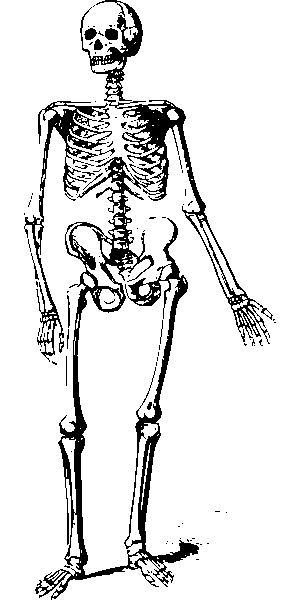A well-organized site structure, optimized with a site structure SEO plugin, is essential for modern digital marketing success. This involves creating logical page hierarchies, using descriptive URLs, prioritizing mobile-friendliness, and implementing strategic internal linking patterns to enhance user experience and search engine visibility. By automating internal linking, these plugins ensure every page contributes to overall optimization, improving crawlability and indexing efficiency for search engines. Regular site audits and optimizations are crucial to maintain a healthy structure, eliminate dead ends, and adapt to evolving SEO algorithms.
In today’s digital landscape, a robust site structure and strategic internal linking are cornerstones of modern SEO. This article delves into the intricacies of these essential practices, guiding you through the process of enhancing user experience and boosting search engine visibility. We explore the benefits of leveraging a SEO plugin for efficient internal linking, uncover optimal placement strategies, and provide tools to measure impact. Additionally, best practices for maintaining a healthy site structure and internal link profile are highlighted, ensuring your website remains a powerhouse in the digital realm.
- Understanding Site Structure: The Foundation of Modern SEO
- How Internal Linking Enhances User Experience and Search Engine Visibility
- Benefits of Using a SEO Plugin for Efficient Internal Linking
- Strategies for Optimal Internal Link Placement within Content
- Measuring the Impact: Analyzing Internal Link Performance with Tools
- Best Practices for Maintaining a Healthy Site Structure and Internal Link Profile
Understanding Site Structure: The Foundation of Modern SEO

Understanding Site Structure: The Foundation of Modern SEO
A well-organized site structure is the bedrock of any successful modern SEO strategy. It’s not just about creating pages; it involves crafting a logical hierarchy that reflects the essence of your content. This means designing a website where each page has a clear purpose and relationships with other relevant pages, both above and below it in the navigation. Using an SEO plugin can greatly assist in visualizing and optimizing this structure by identifying key areas for improvement.
Site structure SEO tips involve keeping categories and subcategories consistent, using descriptive URLs, and ensuring mobile-friendliness. A strategic approach to site structure SEO strategy includes implementing internal linking patterns that distribute link equity evenly throughout the site, enhancing both user experience and search engine visibility. Ultimately, a well-defined site structure not only improves your website’s ability to attract organic traffic but also fosters better content discoverability within your platform.
How Internal Linking Enhances User Experience and Search Engine Visibility

Internal linking plays a pivotal role in enhancing both user experience and search engine visibility. By strategically connecting pages within your website, you create a seamless flow that allows users to navigate effortlessly through related content. This not only improves site structure but also keeps visitors engaged for longer periods, reducing bounce rates and encouraging deeper exploration of your online resources.
A well-organized internal linking strategy complements your site structure SEO plugin efforts by signaling to search engines the hierarchical importance of pages. This helps search engine algorithms better understand the context and relevance of your content, leading to improved rankings in organic search results. Moreover, it facilitates the distribution of link equity across your website, boosting the authority of individual pages and contributing to overall SEO optimization.
Benefits of Using a SEO Plugin for Efficient Internal Linking

In today’s digital era, a well-structured site is not just beneficial for user experience but also a crucial component of modern SEO practices. A SEO plugin designed for internal linking can significantly enhance your site structure SEO strategy. By automating and streamlining the process of creating relevant internal links, these plugins ensure that every page on your website contributes to its overall SEO optimization. This, in turn, improves crawlability, allowing search engines to efficiently index your content.
Additionally, a site structure SEO plugin enables you to create a logical hierarchy within your content, which is essential for conveying topic relevance to both users and search algorithms. This strategic approach to internal linking not only boosts the visibility of your key pages but also encourages visitors to explore more of your website, thereby increasing engagement metrics.
Strategies for Optimal Internal Link Placement within Content

Optimizing internal linking is a key component of modern SEO practices, and a well-structured site structure SEO plugin can significantly enhance your efforts. The first step in effective internal link placement is to understand your site’s architecture and create a logical flow of information. Utilize a hierarchical structure, placing more important pages at the top and interlinking them with relevant content below. This ensures that users and search engines alike can navigate effortlessly through your site.
When implementing the site structure SEO strategy, consider using anchor text that is descriptive and keyword-rich. Avoid generic links like “click here” as they offer little context for both users and search engine crawlers. Instead, use specific keywords or phrases that align with the linked content. For instance, if you’re linking to a blog post about “SEO best practices,” use that phrase as anchor text. This not only improves user experience but also signals to search engines the relevance of the linked page. Additionally, ensure a balanced distribution of internal links throughout your content, as this evenly spreads authority and enhances the overall SEO of your site.
Measuring the Impact: Analyzing Internal Link Performance with Tools

Measuring the impact of internal linking is crucial for any site structure SEO strategy. Using specialized SEO plugins, marketers can analyze link performance and identify high-value pages within their sites. These tools provide valuable insights into user behavior, helping to understand which links are driving the most traffic and conversions. By examining click-through rates, time on page, and bounce rates associated with specific internal links, content strategists can optimize their site structure SEO optimization efforts.
For instance, a well-crafted site structure SEO strategy might involve restructuring pages to create a more intuitive user journey, where relevant content is linked together. This not only enhances the overall site structure SEO but also improves user experience. With data from these analyses, marketers can make informed decisions on which links to strengthen or reposition, thereby improving search engine visibility and user engagement.
Best Practices for Maintaining a Healthy Site Structure and Internal Link Profile

Maintaining a healthy site structure is paramount for effective modern SEO practices, including internal linking. A well-organized site hierarchy not only enhances user experience but also signals to search engines which pages are most important. Utilize a SEO plugin to audit and optimize your site structure regularly, ensuring logical page placement, concise URLs, and consistent navigation. This involves eliminating dead ends in your site’s navigation, improving crawlability, and allowing search engine bots to index your content efficiently.
Implementing best practices for internal linking within this structured framework is key. Strategically place relevant internal links within contextual anchor text, providing users and search engines with a clear understanding of your content’s relationship. Avoid over-linking, as it can dilute the value of individual links. Instead, focus on creating a natural flow of links that support your site’s information architecture. Regularly review and update your internal linking profile using SEO tools to ensure its effectiveness and adaptability to evolving search engine algorithms.
